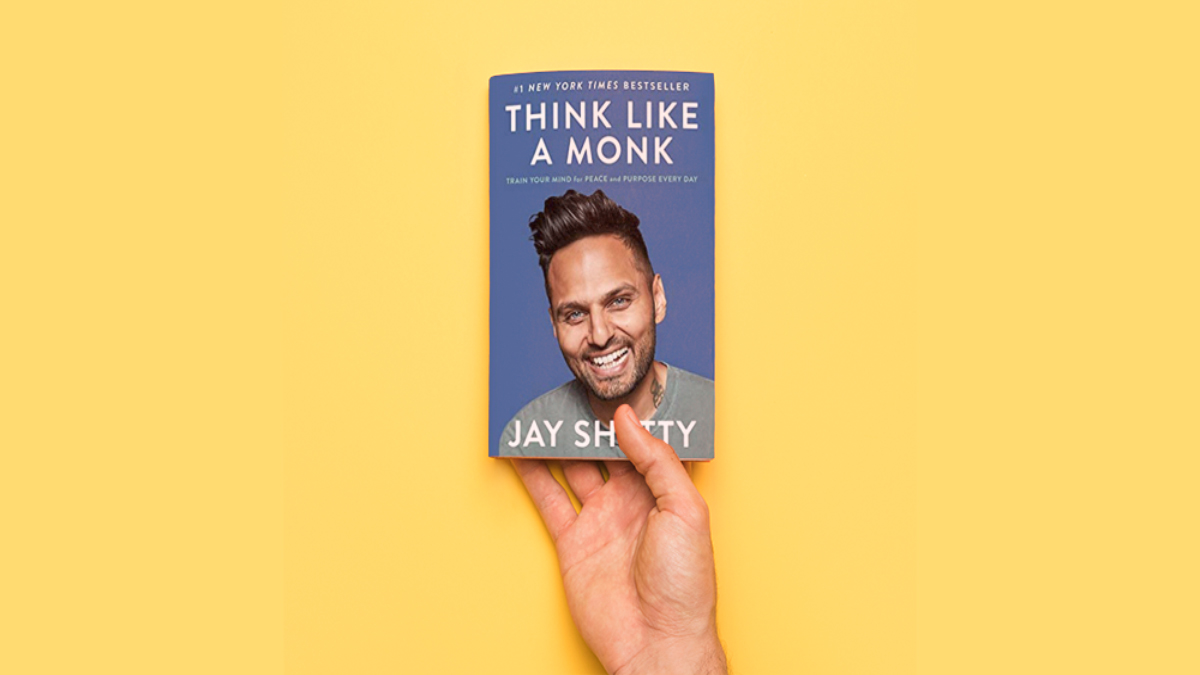
“We should plant trees under whose shade we did not plan to sit”
This is the statement that changed author, podcaster and influencer Jay Shetty`s life several years ago. Because of this statement, Jay Shetty was drawn to explore the life of a monk. He himself spent three years at an ashram as a monk when his teacher asked him to return to the civilian world to share what he learned.
His book Think Like a Monk should actually be renamed as an instruction manual for a meaningful life. Each chapter is filled with golden nuggets of ancient wisdom, interesting quotes, scientific evidence and practical exercises. If you don’t feel like reading the whole book, check out the chapter that speaks to you. In each chapter you can learn all about;
- Steps to identify who you really are and what matters to you without feeling lost in the world
- Productive ways of dealing with negativity and negative people
- The role of fear and using fear to your advantage
- What success really means to you and living with intention
- Finding your passion (what we call passion is actually a misleading term, Jay Shetty introduces the term Dharma which clearly articulates a combination of your skills, passion and the resulting service)
- Why routine should be a vital part of your day
- Managing the mind and differences between the monkey mind and monk mind
- Managing the ego and identifying the false ego
- The practice of gratitude which can be considered the best medicine to cure anything
- How to have thriving relationships
- How to live a meaningful life through service
I have read numerous ‘self-improvement’ books over the years. If you think you have already read plenty of books and don`t need to read anymore -it’s probably your ‘false ego’ trying to tell you that you already know everything. The ‘false ego’ tries to boost your status by telling you that you have nothing more to learn, however your ‘True self’ would remain as a humble and a lifelong student (something new I myself learned by reading Think like a Monk). We all want to show that we are knowledgeable in front of our peers, but Jay Shetty says that it is a moment for you to check yourself and your false ego.
“When we criticize others we notice the bad in ourselves, when we look for the good in others we start to see the good in ourselves too…..When we find ourselves judging others, we should take note. It’s a signal that our minds are tricking us into thinking we’re moving forward when in truth we’re stuck”
– Jay Shetty, Think Like a Monk
The chapter on negativity and `Cancers of the Mind’ (Condemning, Criticizing and Comparing) comprised many new insights that I haven’t read about before. Especially thoughts on judgement…We all do it, I guess it’s about time we find out why. Jay Shetty`s teacher had suggested that whenever he finds himself criticizing another person, he has to name 10 good qualities about that person. The point is to understand that we all have good qualities and we shouldn’t judge another by their worst moments.One article is not enough to talk about everything I learned from this book☺. I will certainly add Think Like a Monk to my ‘Re-read’ list because, on a daily basis I will have to keep reminding myself to check my thoughts and to remain committed to leading a meaningful life.




